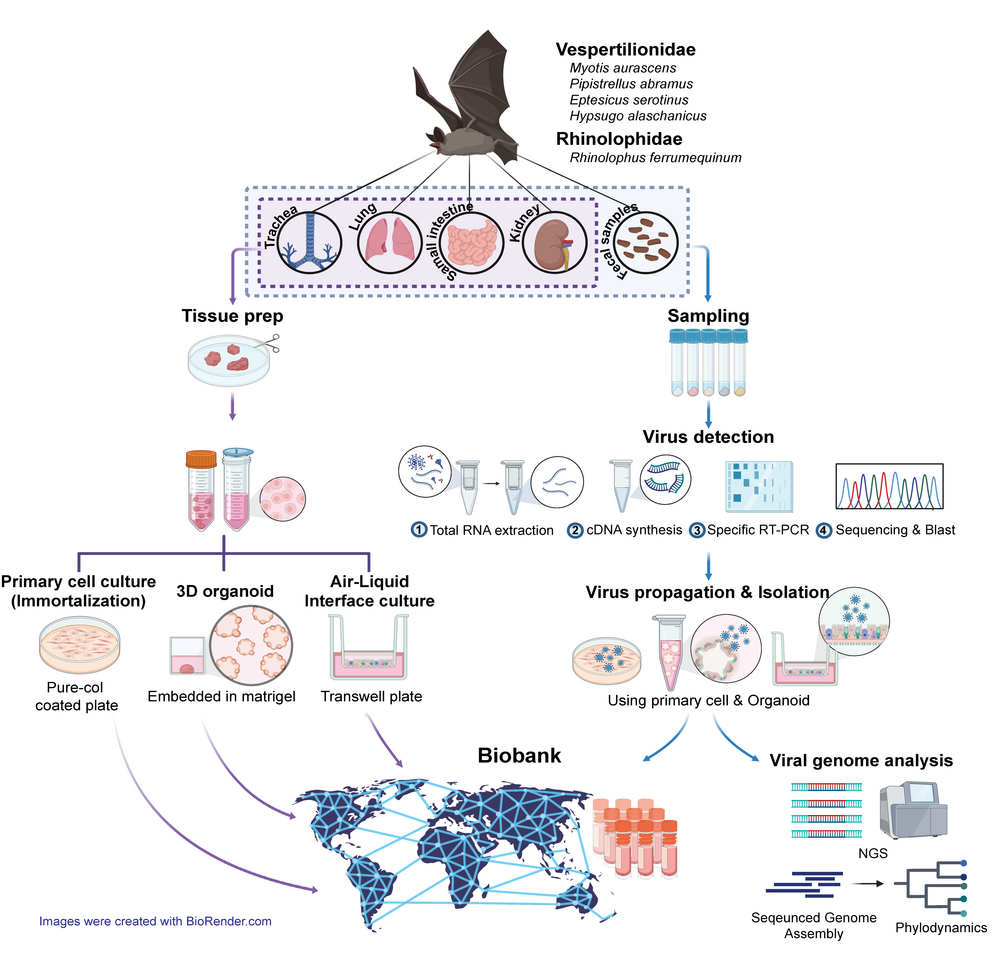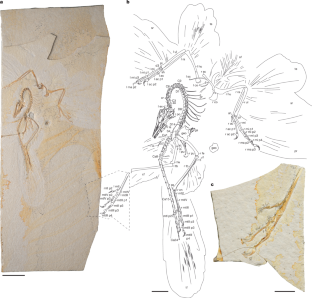2025-05-16 韓国基礎科学研究院(IBS)

Created using BioRender
<関連情報>
- https://www.ibs.re.kr/cop/bbs/BBSMSTR_000000000738/selectBoardArticle.do?nttId=25825&pageIndex=1&searchCnd=&searchWrd=
- https://www.science.org/doi/10.1126/science.adt1438
多様なコウモリオルガノイドが人獣共通感染症ウイルスの病態生理学的モデルを提供する Diverse bat organoids provide pathophysiological models for zoonotic viruses
Hyunjoon Kim, Seo-Young Heo, Young-Il Kim, Dongbin Park, […] , and Young Ki Choi
Science Published:15 May 2025
DOI:https://doi.org/10.1126/science.adt1438
Editor’s summary
Several viruses that cause problems for human beings originated in bats. However, cellular and tissue models for understanding virus infection in these important reservoir species are limited. Kim et al. have worked to develop alternative models for studying bat-virus interactions by obtaining cells from wild-caught insectivorous vespertilionid and rhinolophid bats (see the Perspective by Zhou and Yuen). Organoids were created from four different organs of five different species of bat. The cellular composition of the organoids was verified, and infection experiments were conducted with a range of coronaviruses and influenza A viruses, which showed intact and differentiated innate immune responses. In addition, the organoids were used successfully for virus discovery and in efficacy testing for antiviral drugs. —Caroline Ash
Abstract
Bats are important reservoirs of zoonotic pathogens, but suitable model systems for comprehensively exploring host-pathogen interactions and assessing spillover risks remain limited. To address this gap, we developed a collection of bat organoid models spanning five species and four organ types. This multispecies, multiorgan organoid panel showed species- and tissue-specific replication patterns for several viruses, offering robust pathophysiological models for studying respiratory, renal, and enteric zoonotic viruses. Using this platform, we successfully isolated and characterized bat-borne mammalian orthoreoviruses and paramyxoviruses, demonstrating the utility of these organoid panels for virome surveillance. Furthermore, we successfully tested known antiviral drugs for their efficacy against bat virus isolates.


